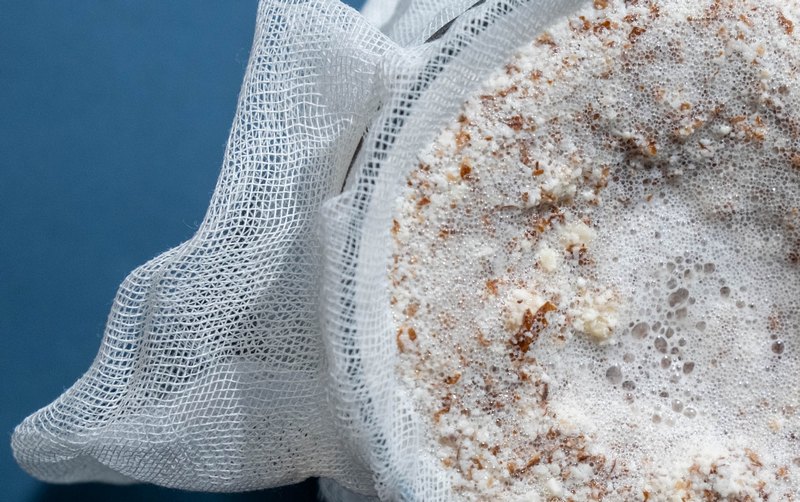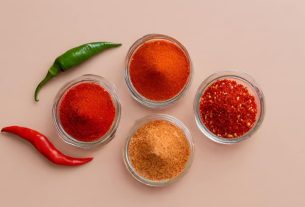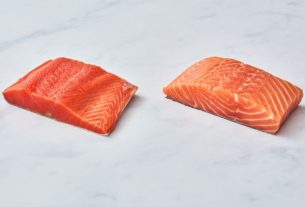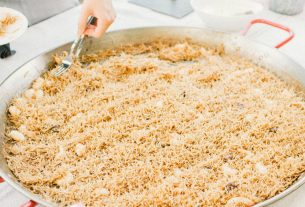Do you love cheese? Have you tried to make them on your own before? If you are yet to, then you should try it. You will get an impeccable taste from making your cheese, a taste that will most certainly be better than that which you buy from the store.
You will be able to remove the whey from the cheese curds by using cheesecloth which is a gauze cloth which is loosely-woven. It will also help in holding them together for the formation of the cheese. A very crucial aspect of making cheese is the cheesecloth and the good thing is that it can be used for other things in cooking.
It is not an easy task to select the correct cheesecloth, you will most definitely be left wondering the very best one. To answer this, you will have to first figure out the type of cheese you wish to make. Cheesecloth is very versatile and you can use it to prepare all types of foods.
What we have in this article is to show you exactly how you can get the best cheesecloth, we will share our top 8 where you will see their different features as well as their provided uses. :
Cheesecloths Buying Guide
It is not everyone that has cheesecloth and this is because it is not a lot of people that know how to make cheese most especially when they can get it from stores. If you are yet to try out cooking your food at home, then you have been missing out greatly, everyone needs to have the experience of home-cooked dishes.
You have probably not made your cheese yourself, however, you will find out that the taste is better than when the ones you buy at the stores. You should try it out one of these days. This is a reason why you will need to own a cheesecloth to help you successfully make your cheese. The advantage is that you can use the cheesecloth for some other things aside from making cheese.
What is cheesecloth and what can you do with it?
We have mentioned this earlier, cheesecloth has a close resemblance with gauze, and it is cotton that is loosely woven. There are seven grades of cheesecloth, ranging from open weave to extra-fine weave. The number or amount of threads for an inch in every direction determines the grade. Cheesecloth can be used similarly as a strainer, but it is difficult to say it can be used to replace a colander. Each time a gauzy fabric layer is added, cheesecloth strains out some finer particles.
You could gather it into a kind of pouch, allowing you to squeeze when you want to extract the liquid or when you hang it to drain for hours. At times, cheesecloth will do the best job and the major benefit of having cheesecloth is that it is adjustable.
Uses of cheesecloth
Cheesecloth is the most-known or primary known to be used to make cheese and it functions mainly to strain dairy products. It helps to separate whey from curds when you want to make cottage cheese or even cheese. It is a very essential step when you are making cheese and you cannot skip it.
However, you can also use cheesecloth for some other things. You can also use the cheesecloth to strain unwanted whey from your yogurt. It will be left thick and very delicious, giving you a kind of Greek-style variety of yogurt. It can also be used to strain your kefir grains from the kefir. It performs those tasks better than using your metal strainer because the metal could impair the vitality and taste.
Cheesecloth can also be used to make brew like coffee. It will help you to take out fine grounds from your cold-brewed coffee. The cheesecloth will also help to smooth out soup stock or fruit jelly. Generally, cheesecloth is a wonderful tool that helps to strain the water and capture solids in different recipes. Some other food items you can use cheesecloth for include:
- Dips
- Salsas
- Sauces
- Ketchup
- Fresh fruit drinks
- Infused oils
- Almond milk
There are more, the highlighted above are only a few.
What types of cheese can you make with cheesecloth?
Popularly, you will associate cheesecloth with your cottage cheeses. Check below for some very common cheeses that new cheesecloth can be used to make:
- Cottage cheese
- Goat cheese
- Ricotta
- Farmer’s
Unusual uses for cheesecloth
Apart from cooking, you can also use your cheesecloth for other things, check a few of them below:
- Used in the laboratories
- Used to make summer shirts in Pakistan and India
- Grade #60 type of cheesecloth can be used in regulatory testing and product safety for the likelihood of fire hazards.
- Used to test how durable some optical coatings are.
- Used in printmaking like lithography to wipe gum arabic. Tarlatan (heavily starched kind of cheesecloth) is usually used for intaglio. Majorly to help wipe excess or extra ink from surfaces of printing.
How to use cheesecloth
Depending on what you want to use it for, you will have to know the particular technique. However, for almost every recipe, the major technique is still the same. Cheesecloth is flexible and soft, meaning that you need to support it and it will not replace your strainer completely. You could support it with either a colander, funnel, or mesh strainer.
First, rinse the cloth with cold water to remove the remaining lint. Unfold it before you use it to cover your strainer. Have a minimum of three inches of leftover cheesecloth that is hanging on the sides so that the liquid won’t spill over by the time it is poured. You should slowly pour the liquid.
What to look for in cheesecloth
You have to consider the grade of cheesecloth before you get one, there are different grades associated with different cheesecloths and it means they will need to be used differently. Check below:
| Grade |
Horizontal x Vertical threads per cm |
Horizontal × Vertical threads per one inch |
| #90 | 17.5 x 14 | 44 × 36 |
| #60 | 12.5 x 11 | 32 × 28 |
| #50 | 11 x 9.5 | 28 × 24 |
| #40 | 9.5 x 8 | 24 × 20 |
| #10 | 8 x 5 | 20 × 12 |

You may try to have more than a type, depending on what you want to make. If you want to use it to make cheese, use the ultra-fine or tightly-woven cheesecloth. Using loosely-woven will not help to catch all the solids when draining your whey from cheese curds. You may, however, triple fold your loosely-woven to help hold them tight.
Eight Best Cheesecloths
-
Nut Milk Bag Reusable Cheesecloth Bags
They are made for making cheese and can also be used for many other things.
Key Features:
- SGS Certified
- BPA-free
- Multiple uses
They are washable and reusable. They have multiple functions and can be used for different things such as cheese, yogurt, homemade juicer, and general filter. Despite being small in size, they work just fine.
Pros
- Bags as against cloth
- Reusable and durable
- Unique design
Cons
- They cannot replace cheesecloth fully
-
Olicity 100% Unbleached Cotton Fabric Cheesecloth: Grade 90
You can use this product for decorations, baking, making cheese, and butter. It is fine, sturdy, and you can wash and reuse it.
Key Features:
- Grade 90
- Multiple households use
- Perfect for cheeses and butter
It is a top-grade type of cheesecloth, being grade 90. It is durable, outshines its competitors, and you can wash and reuse it. It is lint-free and can be used in almost every of your cooking. You may also use it for wrapping spices, roasting, and yogurt.
Pros
- Reusable
- Unbleached
- Ultra-fine cheesecloth
Cons
- It is not too big
-
Pure Acres Farm 100% Unbleached Cotton: Grade 50
This cheesecloth is durable and you can use it several times.
Key Features:
- Lint-free and top-quality
- Unbleached
- 100 percent natural
The product is unbleached, can be used in your kitchen or on your skin. Grade 50 type of cheesecloth is used for many things. The cotton is strong and measures at about 75 feet.
Pros
- Lint-free
- Chlorine-free
- Long lifespan
Cons
- It is just two yards
-
Micron Nut Milk Bag
This product will help you to make a wonderful replacement for any other cheesecloths. It could be used for making your cold-brewed coffee.
Key Features:
- Affordable
- 100 percent food-grade type of nylon
- Big for lots of usages
The cheesecloth is small with a measurement of 12-inch by 12-inch and could be used for something that is not huge. The good thing is that two cheesecloths are contained in a pack and it is still very affordable. It can be used with cold-brewed coffee, tea, fruit juice, vegetable juice, and nut milk.
Pros
- Competitive pricing
- Many uses
- 2 in 1
Cons
- Not too good for cheese.
-
Cheesecloth and Cooking Twine by Kitchen Gizmo
This is a grade 50 type of cheesecloth that is used for many different things.
Key Features:
- Washable and also reusable
- Biodegradable
- All-natural
The product is 100% biodegradable, it is sturdy and can be washed and reused. It is all-natural, does not have any synthetic material included. It is 100 percent pure cotton. Very economical and affordable. It has a cooking twine you can wash and reuse just like the cheesecloth.
Pros
- Affordable
- Eco-friendly
- Cooking twine
Cons
- Use finer cheesecloth to make your cheese.
-
Arkwright Bleached Weave Cheesecloth: Grade 40
This cheesecloth is considered extra-large and works like any other type.
Key Features:
- Reusable and durable
- Washable
- Very large about 70 square yards and 630 square feet of cheesecloth.
The cheesecloth can be washed and then reused for a very long time. It is grade 40 and usually endures a lot of different uses. It can be washed by hand or in a washing machine with warm water and mild detergent. White vinegar or whey will help to remove curd sticking on the cloth.
Pros
- Used for straining cheeses, canning, and stocks.
- Durable
- Larger than almost all competitors
Cons
- It is not as finely-weaved as other types.
-
Pure Acres Farm Cheesecloth, Fine Weave: Grade 90
Key Features:
- Very durable
- Included with a free DIY guide
- Pure cotton.
It is unbleached, reusable, and has a very long lifespan. It is a type of grade 90 cheesecloth which is regarded as the strongest variety of cheesecloth. It can be washed by hand with warm water and mild detergent. It is lint-free and also contains a DIY guide.
Pros
- Used for many things
- Lint-free
- Unbleached cotton
Cons
- Could be difficult to cut
-
SCENG Reusable, 100% Unbleached Cotton Fabric Cheesecloth
This grade 90 is more durable and much better than most of the lower grades. This brand is very versatile i.e. can be used for so many things.
Key Features:
- A lot of household uses
- Top-quality and Lint-free
- 100 percent unbleached cotton
Unbleached cheesecloth is safe from contaminants that are associated commonly with bleach. The cheesecloth was made from pure cotton. Free of annoying lint or recycled fibers. It can be used to dust, clean, surface polish, kombucha scoby, roast chicken or turkey, and also for wine, yogurt, cheese, canning, and spice bags.
Pros
- Very durable
- Ultra-safe
- Versatile
Cons
- Draining time may take a while.


